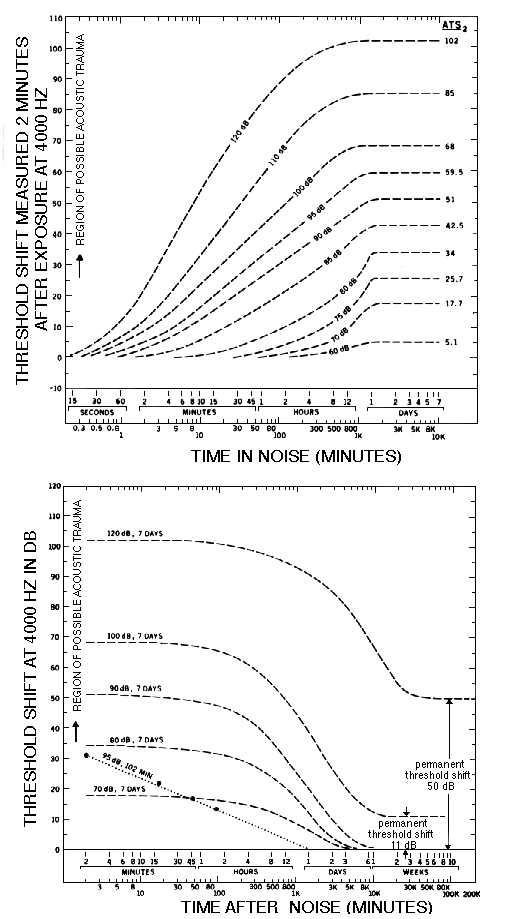
 |
Threshold Shift (TS) |
|
Audiology / Psychoacoustics |
On exposure to noise, the ear's sensitivity level will decrease as a measure of protection. This process is referred to as a shift in the threshold of hearing, meaning that only sounds louder than a certain level will be heard. The shift may be temporary, chronic or permanent.
Susceptibility to TS varies greatly from person to person, men generally being more sensitive to low frequency sounds, and women more susceptible to high frequencies. Sounds in the 2 - 6 kHz range seem to induce greater temporary threshold shift (TTS) than other frequencies. Also called aural fatigue. Compare: Adaptation.
One of the body's reactions to loud sounds is a constriction of the blood vessels (vasoconstriction) which reduces the blood supply reaching the hair cells of the organ of Corti. The outer rows of hair cells respond mainly to low intensity Sound Levels and thus are easily saturated by loud sounds, particularly when their source of blood is diminished. This leaves only the inner rows of hair cells working since they need a higher intensity for stimulation.
Thus, TTS implies a temporary hearing loss for low level sounds (somewhat analogously to the protective closing of the iris in bright light and the resulting temporary desensitization to low light levels). If the outer hair cells are not allowed to recover through periods of quiet, they gradually lose their ability to respond and eventually die. TTS may also be accompanied by tinnitus, a ringing in the ears. See also: Recruitment.
Compare: Boilermaker's Disease, Damage-Risk Criteria, Hearing Level, Hyperacusis, Impact Sound, Loudness, Masking, Noise Pollution, Occupational Deafness.

Hypothetical growth and recovery of threshold shift after various single and continuous exposures to noise centred near 4 kHz ("worst case" condition). These hypothetical curves are for average, normal-hearing young adults, and are based on all available data (from Miller, "Effects of Noise on People", Journal of the Acoustical Society of America, vol. 56, 1974, p. 734-5, used by permission).